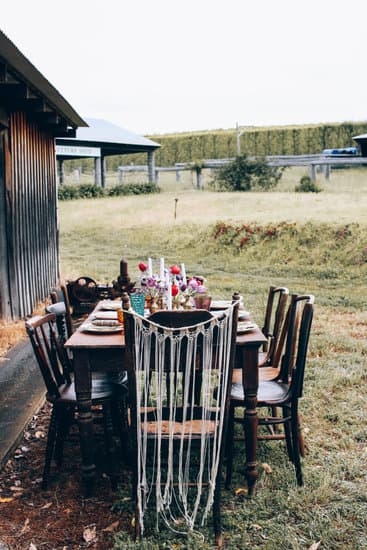As cities grow and green spaces become scarce, the urban gardening idea has taken root as a popular and sustainable solution for city dwellers looking to reconnect with nature. Urban gardening involves cultivating plants in urban environments, offering a range of benefits such as improving air quality, reducing stress, and promoting biodiversity. This growing trend not only enhances the aesthetic appeal of cities but also provides a source of fresh produce for urban residents.
One of the key benefits of urban gardening is its positive impact on the environment. By incorporating green spaces into urban landscapes, these gardens help reduce the heat island effect, combat pollution, and support local wildlife. Additionally, urban gardening can contribute to food security by encouraging individuals to grow their own fruits and vegetables in their communities.
In order to meet the diverse needs of urban gardeners, various types of urban gardening methods have emerged, including rooftop gardens, vertical gardens, and community gardens. These innovative approaches allow city residents to maximize limited space by utilizing rooftops, walls, and shared spaces for growing plants. Whether you’re a seasoned gardener or new to the world of planting, there are plenty of urban gardening options to explore and transform your city surroundings into vibrant green oases.
Benefits of Urban Gardening
Urban gardening is becoming increasingly popular in urban areas as more people recognize the numerous benefits associated with growing plants in city settings. One of the primary advantages of urban gardening is the ability to produce fresh, organic produce right at your doorstep. This not only promotes a healthier lifestyle by incorporating more fruits and vegetables into your diet but also reduces carbon footprint by minimizing transportation emissions associated with food delivery.
Furthermore, urban gardening can help improve air quality in densely populated areas by absorbing carbon dioxide and releasing oxygen through photosynthesis. This greenery can also act as natural air filters, removing pollutants and toxins from the surrounding environment. Additionally, green spaces created through urban gardening initiatives can provide habitats for wildlife, promoting biodiversity in cities where greenery may be scarce.
In addition to these environmental benefits, urban gardening can also have a positive impact on mental health and well-being. Gardening has been shown to reduce stress levels, improve mood, and increase overall happiness. The act of tending to plants and watching them grow provides a sense of accomplishment and connection to nature, which is often lacking in urban environments. Overall, urban gardening offers a holistic approach to improving both physical health and mental well-being in city dwellers.
Types of Urban Gardening
Urban gardening has become increasingly popular as more people seek to bring greenery and nature into urban environments. One of the key factors driving this trend is the limited space available in cities, making traditional gardening challenging. However, innovative urban gardening ideas have emerged to help city dwellers grow plants in various ways. From rooftop gardens to vertical gardens and community gardens, there are plenty of options for those looking to cultivate their green thumb in an urban setting.
Rooftop gardens are a wonderful way to utilize underused space in urban areas. These gardens not only provide a beautiful oasis in the midst of concrete jungles but also offer environmental benefits such as insulation, heat reduction, and stormwater management. Many urban residents have transformed their rooftops into lush green spaces growing anything from vegetables to flowers. Additionally, rooftop gardens can contribute to biodiversity by attracting bees, butterflies, and other pollinators essential for plant growth and ecosystem health.
Vertical gardens are another creative solution for urban gardening enthusiasts with limited space. By utilizing walls or structures to grow plants vertically, individuals can maximize space while adding a touch of natural beauty to their surroundings.
Vertical gardens can be created using various techniques such as hydroponics or aeroponics, allowing for a diverse range of plants to thrive even in the smallest of spaces. Community gardens are also gaining popularity as they bring neighbors together to cultivate shared green spaces, fostering a sense of community and collective responsibility for the environment.
| Rooftop Gardens | Vertical Gardens | Community Gardens |
|---|---|---|
| Provide environmental benefits | Maximize space utilization | Foster community engagement |
| Contribute to biodiversity | Create natural beauty | Promote shared responsibility |
Choosing the Right Plants
When embarking on an urban gardening journey, one of the most crucial steps is selecting the right plants that will thrive in an urban environment. Urban areas often have limited space, different lighting conditions, and pollution to contend with, so it’s essential to choose plants that can withstand these challenges. Here are some tips for selecting plants that are well-suited for urban gardening:
Consider Native Plants
One of the best ways to ensure success in urban gardening is by choosing native plants that are adapted to the specific climate and conditions of your city. Native plants are more likely to thrive with minimal care, as they have evolved to grow naturally in your region. Research local plant species and consider incorporating them into your urban garden for a low-maintenance and sustainable option.
Look for Low-Maintenance Plants
In an urban setting where time and space may be limited, opt for low-maintenance plants that require minimal care. Succulents, cacti, and hardy perennial flowers are excellent choices for busy city dwellers who still want to enjoy a green haven. These plants typically require less water and attention, making them ideal for urban gardening where resources may be scarce.
Consider Vertical Growth
When selecting plants for your urban garden, take advantage of vertical space by choosing climbers, vines, or tall grasses. Vertical gardens can maximize space in small urban areas like balconies or courtyards while adding visual interest and texture to your outdoor oasis. Consider options like ivy, jasmine, or even dwarf fruit trees that can grow vertically against walls or trellises. By thinking vertically, you can create a lush green paradise even in tight city spaces.
By following these tips and carefully selecting plants that are well-suited for urban environments, you can create a thriving garden in the midst of the bustling cityscape. Whether you opt for native species, low-maintenance varieties, or vertical growers, choosing the right plants is key to cultivating a successful urban garden that brings beauty and nature into your urban space.
Let your creativity flourish as you explore different plant options and design an urban garden that reflects your unique style and personality.
Container Gardening
Choosing the Right Containers
When starting a container garden in a small urban space, selecting the right containers is crucial for the success of your plants. It’s essential to choose containers with proper drainage holes to prevent waterlogging and ensure that plant roots have adequate oxygen.
Additionally, consider the size of the containers based on the type of plants you want to grow. Larger containers are suitable for vegetables and flowers that require more space for root growth, while smaller pots work well for herbs and succulents.
Selecting Suitable Plants
Another key aspect of container gardening in urban areas is choosing plants that thrive in confined spaces and limited sunlight. For small city gardens, opt for dwarf varieties of vegetables or fruits that can be grown vertically or compactly.
Herbs like basil, mint, or parsley are also excellent choices for container gardens since they can be easily maintained indoors or outdoors. Consider factors such as sunlight exposure, temperature variations, and watering requirements when selecting plants for your urban garden to ensure their healthy growth.
Caring for Your Container Garden
Proper maintenance is essential to keep your container garden flourishing in small urban spaces. Regularly monitor the moisture level of the soil by checking if it feels dry to touch before watering your plants. Fertilize your container garden periodically with organic plant food to provide essential nutrients for healthy growth.
Prune dead leaves or flowers regularly and inspect your plants for any signs of pests or diseases. By dedicating time and effort to care for your container garden, you can create a vibrant green oasis in the midst of an urban environment.
DIY Urban Gardening Ideas
Urban gardening has become a popular trend in urban areas due to the limited space available for traditional gardening. People are embracing the concept of growing plants in small city spaces like balconies, rooftops, and even windowsills. One creative urban gardening idea that has gained traction is utilizing vertical gardens. Vertical gardens allow individuals to grow plants upward on walls or structures, maximizing space and adding an aesthetic appeal to urban environments.
When it comes to DIY urban gardening ideas, using recycled materials can be a cost-effective and eco-friendly approach. Repurposing items such as old pallets, wooden crates, or even plastic bottles can serve as unique planters for herbs, flowers, or vegetables.
Not only does this help reduce waste, but it also adds a personal touch to your urban garden. Additionally, creating a compost bin from kitchen scraps can provide nutrient-rich soil for your plants, promoting sustainability in your gardening efforts.
Furthermore, incorporating water-saving techniques like drip irrigation systems or collecting rainwater can make urban gardening more efficient and environmentally friendly. These methods help conserve water while ensuring that your plants receive adequate hydration. Embracing DIY projects like creating self-watering planters or building trellises for climbing plants can enhance the functionality and beauty of your urban garden. With some creativity and resourcefulness, anyone can transform their city space into a lush green oasis through innovative urban gardening ideas.
| Aspect | Details |
|---|---|
| Vertical Gardens | Utilize walls or structures for planting; maximize space |
| Recycled Materials | Repurpose items like pallets or plastic bottles as planters; reduce waste |
| Water-Saving Techniques | Implement drip irrigation systems; collect rainwater for plant hydration |
Urban Gardening Tools and Supplies
Urban gardening has become increasingly popular in urban areas due to its numerous benefits such as promoting sustainability, providing fresh produce, and creating a green space in the concrete jungle. To ensure successful urban gardening, it is important to have the right tools and supplies at your disposal. Here are some essential items needed for urban gardening:
- Gardening Gloves: Protect your hands from thorns, sharp edges, and soil while working in the garden.
- Watering Can or Hose: Proper watering is crucial for plant growth, so make sure you have a reliable way to water your plants.
- Pruning Shears: Keep your plants healthy and promote growth by regularly pruning dead or overgrown branches.
- Trowel and Hand Fork: These tools are essential for planting, transplanting, and loosening soil in containers or small garden beds.
In addition to tools, having the right supplies can also contribute to the success of your urban gardening efforts. Some essential supplies include:
- Organic Soil Mix: Choose a high-quality soil mix that provides adequate nutrients for your plants to thrive.
- Containers or Planters: Utilize various containers such as pots, hanging baskets, or window boxes to grow plants in small spaces.
- Fertilizer: Supplement your plants with essential nutrients through organic fertilizers to boost their growth and productivity.
- Mulch: Help retain moisture in the soil and suppress weeds by adding a layer of mulch around your plants.
By equipping yourself with the right tools and supplies for urban gardening, you can create a flourishing green space even in the midst of a bustling cityscape. Whether you are a beginner or experienced gardener, having these essential items will enhance your gardening experience and increase the chances of successful plant growth. So roll up your sleeves, gather your tools, and get ready to transform your urban space into a thriving garden oasis.
Maintenance Tips
Urban gardening has become increasingly popular in urban areas due to the limited space many city dwellers have for traditional gardens. As more people are choosing to cultivate plants in urban environments, it is essential to understand how to properly care for an urban garden to ensure its success. Maintaining an urban garden requires dedication and knowledge of the specific needs of plants grown in these conditions.
To keep your urban garden flourishing, here are some maintenance tips:
- Regular Watering: Urban environments can be hot and dry, so it is important to water your plants regularly. Consider investing in a drip irrigation system or self-watering planters to make watering more efficient.
- Weeding: Keep an eye out for weeds that can choke out your plants and remove them regularly. Use mulch to help suppress weed growth and retain moisture in the soil.
- Pruning and Deadheading: Regularly prune back overgrown plants and deadhead flowers to encourage new growth. This will help keep your urban garden looking neat and tidy.
In addition to these basic maintenance tasks, it is essential to monitor the health of your plants regularly. Look for pests, diseases, or nutrient deficiencies that may be affecting your plants. By staying proactive and addressing any issues promptly, you can ensure that your urban garden continues to thrive.
Success Stories
Many urban gardeners have found creative ways to cultivate lush greenery in the midst of concrete jungles. One such success story is that of Amy, who transformed her tiny balcony into a thriving oasis of herbs, flowers, and vegetables. By utilizing vertical gardening techniques and selecting hardy plant varieties, Amy was able to create a vibrant urban garden that not only beautified her space but also provided fresh produce for her kitchen.
Another inspiring tale comes from Mark, who spearheaded a community gardening project in his neighborhood. By rallying his neighbors together, Mark was able to establish a communal green space where residents could grow their own fruits and vegetables. This initiative not only brought the community closer together but also encouraged sustainable practices like composting and rainwater harvesting.
These success stories serve as a testament to the power of urban gardening as a transformative and fulfilling endeavor. With dedication, creativity, and a bit of know-how, anyone can create their own green paradise in the heart of the city.
Success Stories
Urban gardening has become a popular trend in urban areas, with more and more people embracing the idea of growing plants in city spaces. The benefits of urban gardening are extensive, from improving air quality to providing fresh produce right at your doorstep. As cities become more crowded, turning a small corner into a green oasis can make a significant impact on the environment and one’s well-being.
One of the most inspiring aspects of urban gardening is hearing about success stories from individuals who have transformed their city spaces into beautiful gardens. These urban gardeners have shown that with creativity, determination, and passion, anyone can create a thriving garden in even the smallest of urban settings. From rooftop gardens to community plots, these gardeners have not only beautified their surroundings but also fostered a sense of community and sustainability in their neighborhoods.
Whether it’s through innovative DIY projects or simply choosing the right plants for their urban environment, these success stories serve as motivation for aspiring urban gardeners. By sharing their experiences and accomplishments, they encourage others to take on the challenge of starting their own urban gardens. With the right tools, supplies, and maintenance tips, anyone can turn an urban gardening idea into a flourishing reality and contribute to making our cities greener and healthier places to live.
Frequently Asked Questions
What Plants Are Best for Urban Gardening?
When it comes to urban gardening, some of the best plants to consider are herbs like basil, mint, and rosemary, as they can thrive in small spaces. Vegetables like tomatoes, peppers, and lettuce also do well in urban environments due to their adaptability.
How Do You Do Urban Gardening?
Urban gardening involves utilizing whatever space you have available to grow plants, whether it’s a balcony, rooftop, or tiny backyard. It’s important to consider factors like sunlight, water access, and soil quality when planning your urban garden. Container gardening is a popular method for urban gardening since it allows you to grow plants in limited space.
How Do You Make a Small Urban Garden in 6 Steps?
Creating a small urban garden can be achieved in six simple steps. First, assess your space and determine the amount of sunlight it receives. Next, choose the right plants based on sunlight availability and your preferences. Prepare the soil by adding compost or fertilizer for optimal plant growth.
Plant your selected seeds or seedlings carefully according to their specific requirements. Regularly water and maintain your garden by pruning, weeding, and feeding your plants as needed. Finally, enjoy the fruits of your labor by harvesting fresh produce from your small urban garden.

Welcome to my gardening blog! I am passionate about plants and enjoy sharing my knowledge and experiences with others. In this blog, I will write about everything related to gardening, from tips on how to get started to updates on my own garden projects.





